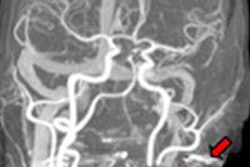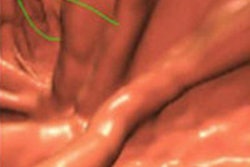A metal artifact reduction algorithm improved the accuracy of detecting lesions near metallic hardware on a CT phantom even at low radiation doses, according to a study published in the March issue of the American Journal of Roentgenology.
Prior research has demonstrated the capacity of various techniques -- including filtered back projection (FBP) and metal artifact reduction algorithms -- to enhance the quality of CT scans and thus facilitate the identification of lesions, wrote study author Dr. Naveen Subhas and colleagues from the Cleveland Clinic (AJR, March 2018, Vol. 210:3, pp. 593-600).
The researchers compared these two artifact reduction methods to determine which might be the most ideal for detecting lesions visible on the CT scans of patients who have metal implants from joint surgery.
The group first acquired CT scans of a CT phantom containing metallic spheres and rods using a low, clinical, or high radiation dose. Next, they reconstructed these CT scans using either a metal artifact reduction algorithm based on advanced modeled iterative reconstruction (ADMIRE) or traditional filtered back projection.
They found that the three independent radiologists who reviewed the reconstructed CT scans spotted lesions with a higher accuracy on the metal artifact reduction scans than on the FBP scans regardless of radiation dose.
The area under the curve, i.e., accuracy of lesion detection on the metal artifact reduction scans, was 0.946 at the low radiation dose compared with 0.856 on the FBP scans (p < 0.001). At the clinical dose, the accuracy was 0.975 on the artifact reduction scans and 0.888 on the FBP scans (p = 0.001).
"Using advanced metal artifact reduction techniques can lead to significant reductions in radiation exposure without compromising the ability to detect lesions when imaging patients with arthroplasties," the authors concluded.



















